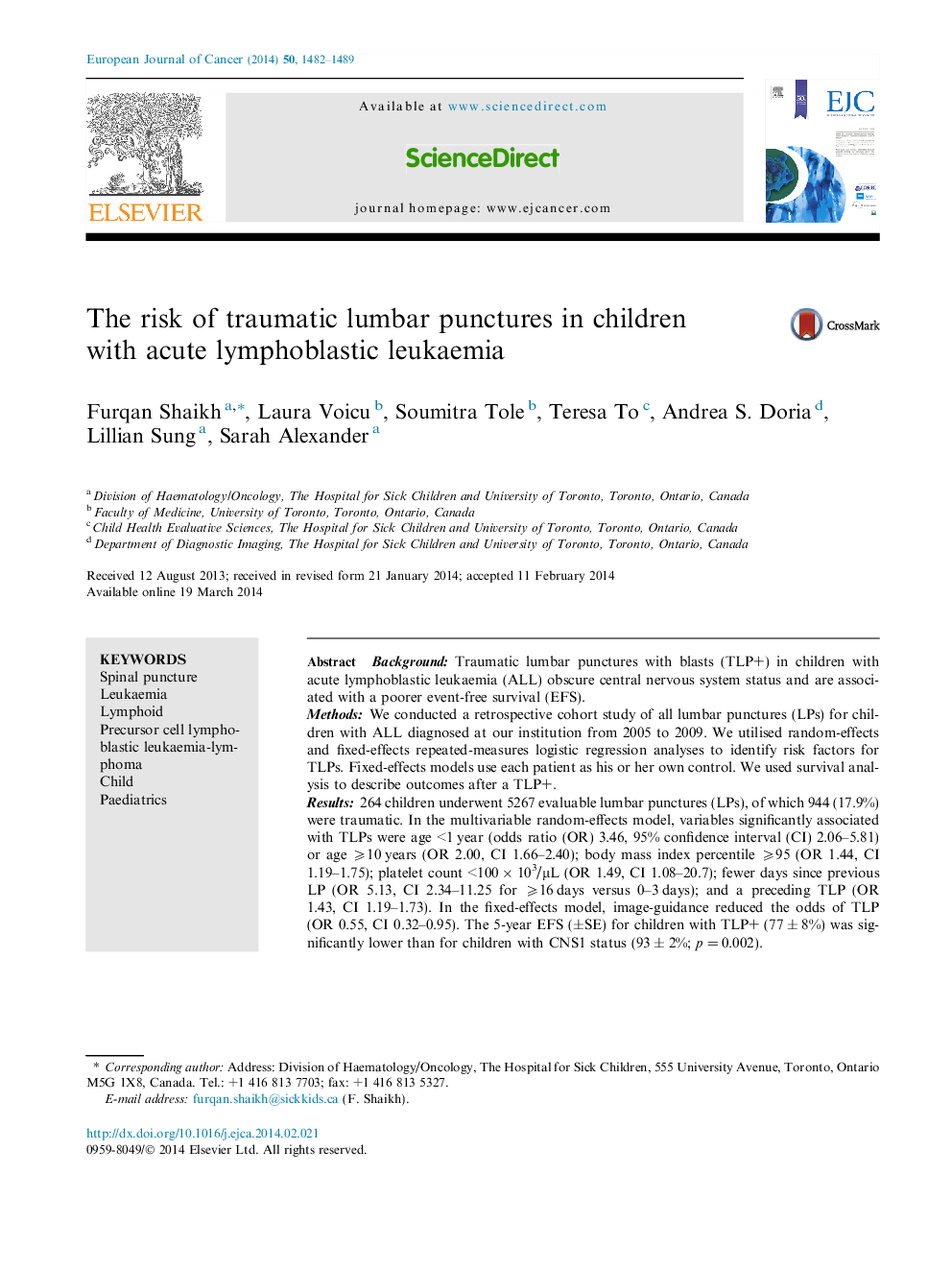| Article ID | Journal | Published Year | Pages | File Type |
|---|---|---|---|---|
| 2121924 | European Journal of Cancer | 2014 | 8 Pages |
BackgroundTraumatic lumbar punctures with blasts (TLP+) in children with acute lymphoblastic leukaemia (ALL) obscure central nervous system status and are associated with a poorer event-free survival (EFS).MethodsWe conducted a retrospective cohort study of all lumbar punctures (LPs) for children with ALL diagnosed at our institution from 2005 to 2009. We utilised random-effects and fixed-effects repeated-measures logistic regression analyses to identify risk factors for TLPs. Fixed-effects models use each patient as his or her own control. We used survival analysis to describe outcomes after a TLP+.Results264 children underwent 5267 evaluable lumbar punctures (LPs), of which 944 (17.9%) were traumatic. In the multivariable random-effects model, variables significantly associated with TLPs were age <1 year (odds ratio (OR) 3.46, 95% confidence interval (CI) 2.06–5.81) or age ⩾10 years (OR 2.00, CI 1.66–2.40); body mass index percentile ⩾95 (OR 1.44, CI 1.19–1.75); platelet count <100 × 103/μL (OR 1.49, CI 1.08–20.7); fewer days since previous LP (OR 5.13, CI 2.34–11.25 for ⩾16 days versus 0–3 days); and a preceding TLP (OR 1.43, CI 1.19–1.73). In the fixed-effects model, image-guidance reduced the odds of TLP (OR 0.55, CI 0.32–0.95). The 5-year EFS (±SE) for children with TLP+ (77 ± 8%) was significantly lower than for children with CNS1 status (93 ± 2%; p = 0.002).ConclusionsThe frequency of TLP remains high. Consistent with previous studies, a TLP+ at diagnosis was associated with a poorer EFS. These risk factors can allow identifying interventions to reduce TLPs and directing interventions to those at highest risk.
